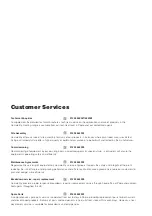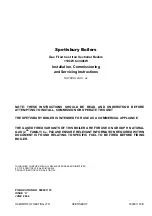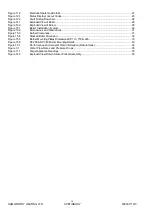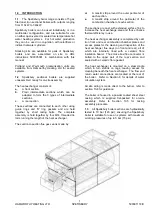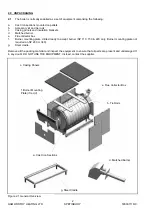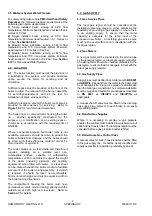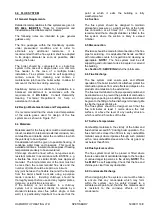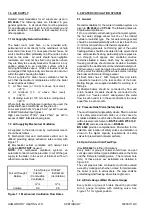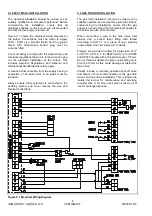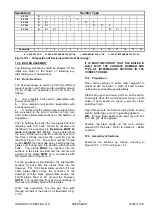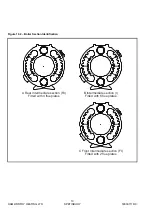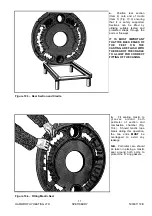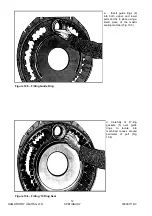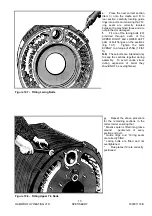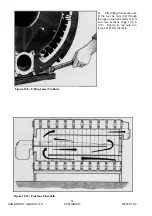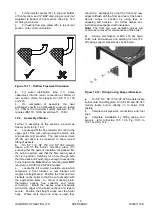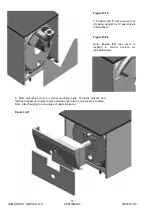
HAMWORTHY HEATING LTD
3
SPETISBURY
500001118/C
3.0 GENERAL REQUIREMENTS
3.1 Related Documents.
Gas Safety (Installation and Use) Regulations
1994 – (As amended).
It is the law that all gas
appliances are installed by competent persons, in
accordance with the above regulations. Failure to
install appliances correctly could lead to
prosecution.
It is in your own interest, and that of safety, to
ensure that this law is complied with.
The installation of the boiler
MUST
be in accordance
with the relevant requirements of the Gas Safety
Regulations, Building Regulations, I.E.E. Regulations
and the bylaws of the local water undertaking.
The installation should also be in accordance with any
relevant requirements of the local gas region and local
authority and the relevant recommendations of the
following documents :-
British Standards
BS.5854
- Code of practice for flues and flue
structures in buildings. See para 5 (3.6).
BS.6644
- Specification for installation of gas fired
hot water boilers of rated inputs between 60kW and
2MW.
BS.6700
- Design, Installation, testing and
maintenance of services supplying water for
domestic use.
BS.6880
- Code of practice for low temperature hot
water heating systems of output greater than 45kW.
Part 1:
Fundamentals & design considerations.
Part 2:
Selection of equipment.
Part 3:
Installation, commissioning & maintenance.
BS 7074 -
Application, selection and installation of
expansion vessels and ancillary equipment for sealed
water systems.
Part 2:
Code of practice for low and
medium temperature hot water systems.
BS.CP342
- Code of practice for centralised hot
water supply.
Part 2
: Buildings other than individual
dwellings.
I. Gas E. Publications
IGE/UP/1
Soundness testing and purging of
industrial and commercial gas installations.
IGE/UP/1A
Soundness testing and direct purging of
small low pressure industrial and commercial natural
gas installations.
IGE/UP/2
Gas installation pipework, boosters and
compressors in industrial and commercial premises.
IGE/UP/10
Installation of gas appliances in industrial
and commercial premises.
Health and Safety Executive :-
Guidance note PM5
- Automatically controlled steam
and hot water boilers.
CIBSE Publications:-
"CIBSE Guide"
It is impractical in this document to specify all relevant
information, but the following extracts from the above
references are emphasised since failure to comply with
these requirements will almost certainly result in an
unsatisfactory installation.
3.2 Feed Water Quality
If the boiler feed water has a high degree of
hardness, it is recommended that the water be
treated to prevent precipitation of scale or sludge in
the boiler water passageways. Details of additives
can be obtained from any reliable manufacturer of
water treatment products or the local water
authority.
It should be noted however, that even if the boiler water
is of average hardness, not requiring treatment,
subsequent draining of the system for repair or constant
make-up water due to an undetected leak will cause
additional deposits and gradual build-up of scale. It is
essential therefore, that leaks are attended to promptly
and draining is kept to an absolute minimum.
It is recommended that the system be flushed out at
least twice before any water treatment is added. If
any doubt exists regarding the internal cleanliness
of an old system, consideration should be given to
the fitting of a coarse filter in the return pipework to
the boiler(s).
3.3 Adequate Water Flow
Care should be taken in the initial design and layout
having due regard for adequate water flow through the
boilers and the influence of the system controls.
It is recommended that the system design should
ensure a minimum return temperature of 50 °C.
If the temperature/flow rates of the application
cannot meet those given in Figure 3.1 it may be
necessary to incorporate mixing valves and shunt
pumps to ensure that the boiler will operate
satisfactorily. Figure 3.1 shows recommended and
minimum water flows required with the associated
pressure losses. The control system and valves,
where fitted, should be regulated to avoid lower
flows occurring.
3.4 Time Clock Control
In order to avoid local overheating and progressive
calcium deposition at zero flow conditions where
boilers are operated from time clocks, provision
should be made for a 5 minute circulating pump
over-run after the last boiler has ceased firing.
Содержание Spetisbury
Страница 30: ...HAMWORTHY HEATING LTD 24 SPETISBURY 500001118 C Figure 12 2 Fault Finding Flowchart...
Страница 36: ...HAMWORTHY HEATING LTD 30 SPETISBURY 500001118 C Figure 15 1 Boiler Installation Typical 15 0 TECHNICAL DATA...
Страница 42: ...HAMWORTHY HEATING LTD 36 SPETISBURY 500001118 C NOTES...
Страница 43: ...Notes...


